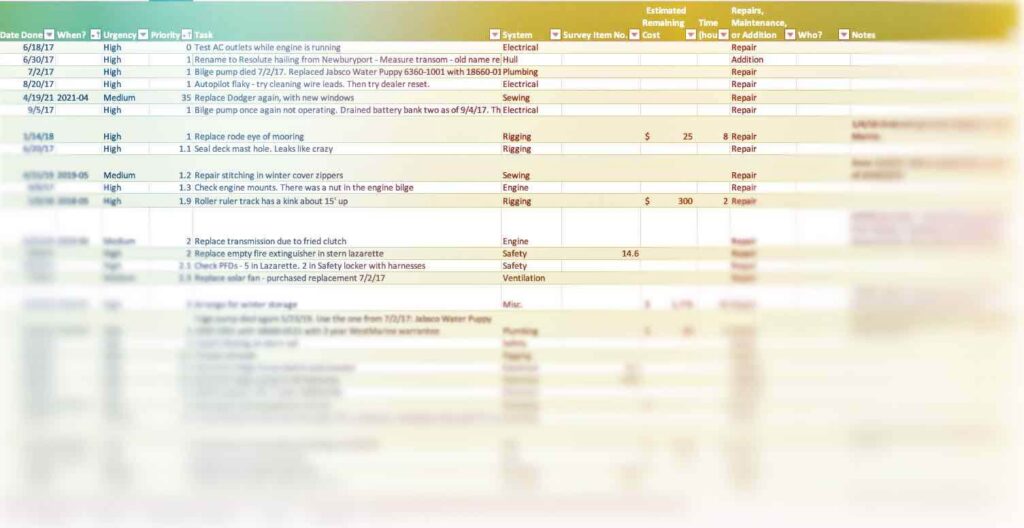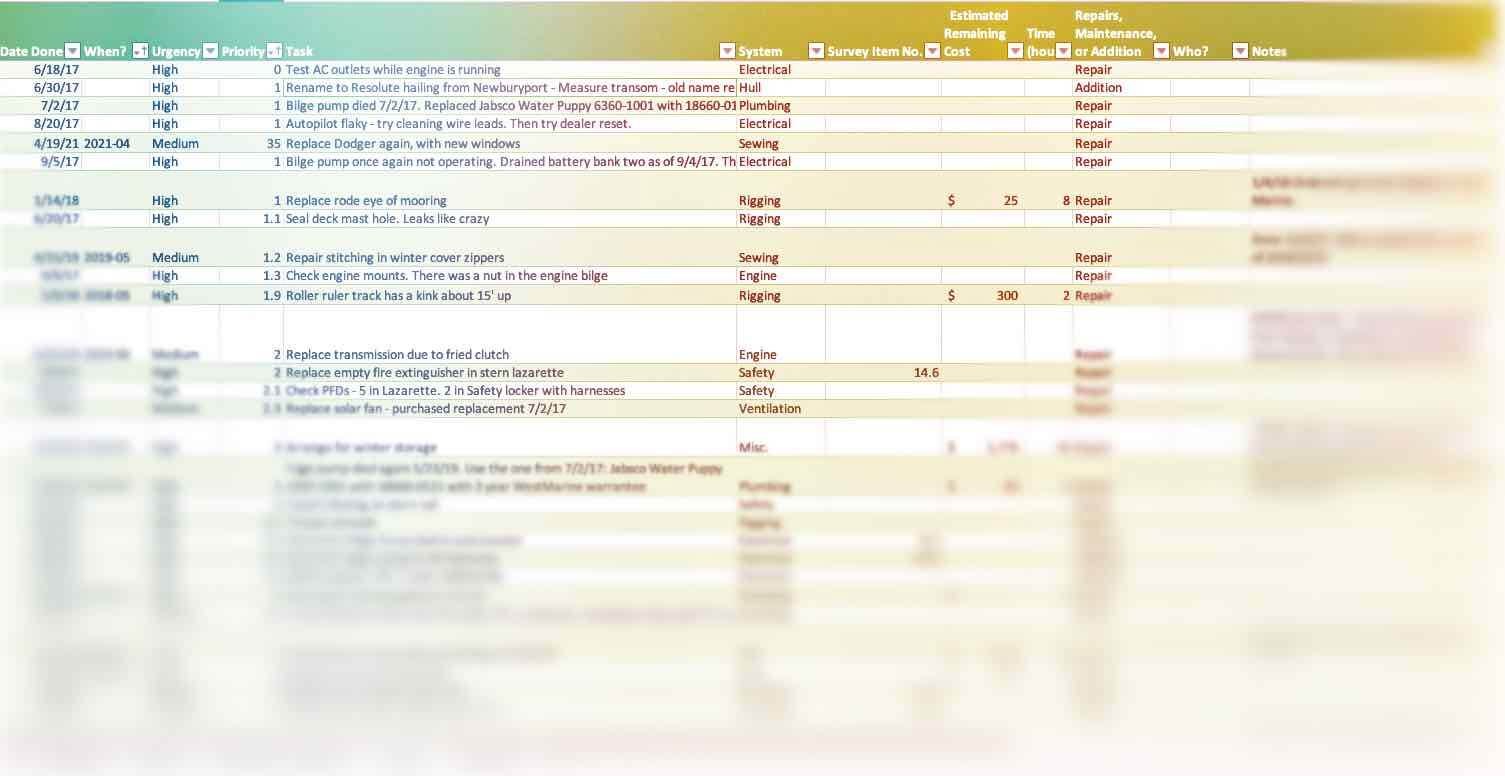“Proper prior planning prevents piss poor performance.” This admonishment was a regular feature of the youth of a certain era including mine. These quips were meant to educate in the manner of upstanding citizens. Now we use memes, Gifs and emojis to convey a general attitude of F@#$! it. I’ll sound like a curmudgeon if I go down that theme any longer. Instead, I’d like to update the old saying to the newer version heard on a podcast. The newer version “Plan, Prepare, Execute” assumes the practitioner would want to avoid poor performance, so omits it. Performance is replaced with execution. Fine. Planning is now assumed as well to be proper. Fine. The only addition is that of “Prepare”.
So what of “Prepare.” Is it redundant with. “Plan”? Why would today’s minimalist language add an unnecessary word? I would argue that planning and preparation are very different. Planning I think of as reading, writing and making lists. Planning can also involve discussions with knowledgeable and experienced people. I’m not sure watching You Tube videos of attractive people engaged in the desired activity would fit in the realm of planning, but perhaps it helps with exploring the emotional aspects of decision making, so I won’t shame anyone for watching them.
Preparing is more active than planning. I think of practicing, provisioning, procuring, and actions. Preparing can look a lot like executing in some endeavors. If, for example, the desired project is a long-distance sail, you could easily mistake someone sailing off the dock for execution unless you knew how far they planned to go before returning. If they are planning to return later that day, it would fall into the category of preparation as they gain more experience on the water to help them when they later set off for a trip lasting weeks.
Execution is the be all end all. Once you have entered the execution mode, it is likely too late to plan and prepare. It’s tough to figure out where you are going if you have left shore without charts, guides, or other materials in hand that you can access when beyond the reach of cell towers. That planning needs to take place well in advance by figuring out what those materials are. Preparing is the process of procuring them, reviewing them, understanding how to use them, and making sure they will be available, working, and in-hand when needed.
The encapsulation of these three simple steps is a process. The process can be applied to many things from as mundane as the grocery store:
Plan: Look through the fridge and pantry, pull recipes, make a meal plan for the week, make a grocery list
Prepare: Put the reusable grocery bags, the list, and a pen in the car. Grab your wallet and keys.
Execute: Go to the store, walk the aisles referring to the list, checking off items as you put them in the cart. Pay, Go home. Put away the groceries and bags.
We’ve all done this enough times for it to be rote, and yet how often do we forget the bags, or even fail to properly plan? Why do we skip the planning? We know we will get better results if we plan. Is it laziness? If so, it’s not a good thing for the lazy to skip the planning as they are more likely to have to go back to the store later in the week for items they need such as coffee. Is it arrogance? We think we know what we have in the fridge and pantry and can remember what we want to buy. If so, good for you. For my part, I find having a running list far easier and more reliable than having to remember that we are almost out of eggs.
I have learned a lot from my children. Ashley was born an artist, able to draw a straight line, fair curve or a neat circle from a young age. What Ashley taught me was that the creative process involves a lot of, well, process. It’s not a case of being able to draw well that makes a composition turn out well. It’s skill for sure but also a methodology and hard work. Ashley has always done the work with long hours and constant effort combined with great teachers and a natural ability. Check out http://www.AshleyCaswell.com.
None of this is particularly inspiring and I apologize dear reader for go on in this way. It’s top of mind as I look over a list I have been working on for more than five years. It’s a list of specific tasks and equipment related to an off-shore long-distance sailing trip. It contains criteria for a boat with weighting of various features as well as costs to add those features if missing. I had used that section in shopping for boats five years ago. Another section of the list itemizes maintenance tasks to be periodically performed. It includes the frequency, cost, time estimates, the date last performed, and a calculated date of when it should next be done. I’ve honed the maintenance section each year as the boat is readied for launch, used during the season, and then put away each winter. A detailed list of equipment tracks when it is removed and then brought back aboard each season.
The most heavily used part of the planner is the to do list. It lists all the work left to do to fix broken stuff, upgrade old stuff and add new equipment. It attempts to identify a general time-frame of when I would try to do it, how long it would take, what it would cost, a priority rating, and what section of the marine survey report it relates to if it was something listed in the purchase survey. That survey, completed as part of the purchase process, involved two sessions with an experience and certified marine surveyor who crawled over, under and through every section of the boat, making a detailed record of everything he saw. That record became a lengthy report that formed the first version of the to do report. It included recommendations on the urgency of the issue. The lack of high urgency items was a key factor in deciding to move forward with the boat.

Over the last five years, I have added a lot to the to do list. Every time I used the boat, I found things that could be improved, cleaned, tightened, loosened, greased, painted, varnished, tied, untied, spliced, sewed, covered or otherwise fiddled with. Some things were too small to bother putting on the list and were just put on my running scratch pad. Of the things worthy of doing later, I have had over 230 items. When a to-do is done, I enter the date done. If it is in progress, I don’t get to enter that date done. If I did it, and it didn’t work, or turned into a larger project, I either mark it done and start a new line, or just modify the existing line depending upon whether something worth remembering was completed. I use a filter to hide items with a date done. That filtered list is my constant reference and sometimes feels like my boss.
What strikes me now, is how few tasks remain, and how none of them are a high priority. Certainly there are plenty of things left on the list such as upgrading the chart plotter, adding a diesel cabin-heater, and things that would make me less nervous going a long way offshore. But there isn’t anything left to do that needs to be done to feel confident in the sea-worthiness of the vessel. I have redundancy in key areas of concern and all systems of importance are in solid working order. The boat is comfortable and capable. She even smells pretty good!
So that leaves just one area of concern before making a long trip and that is me. Am I ready? Have I logged enough hours at sea in enough conditions to be able to handle whatever may come my way (Over 3500 in my log book). We’ll just have to see. From my decades of planning, I know that I am better prepared than many that have made similar journeys safely, even through difficult conditions. I feel good, and for every concern I’ve had, I’ve taken the time to learn more, practice more, and alleviate the concern.
So it must be time to go! Stay tuned for more as the journey begins.
